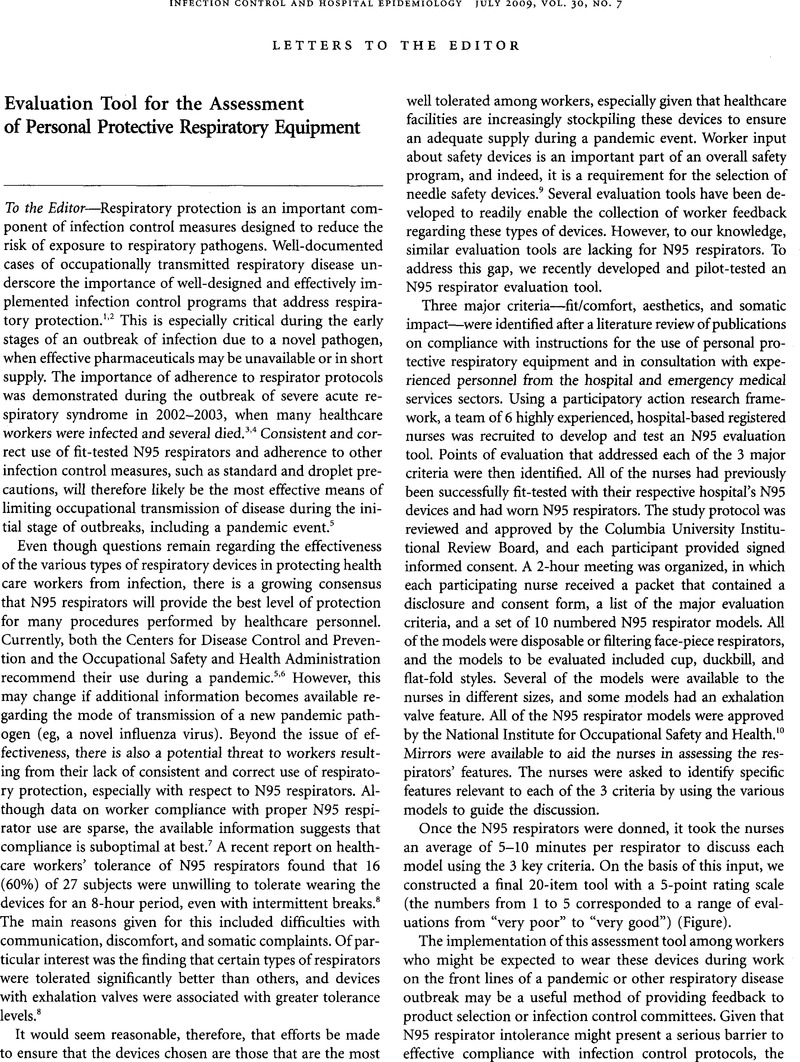Crossref Citations
This article has been cited by the following publications. This list is generated based on data provided by Crossref.
Eames, I.
Tang, J. W.
Li, Y.
and
Wilson, P.
2009.
Airborne transmission of disease in hospitals.
Journal of The Royal Society Interface,
Vol. 6,
Issue. suppl_6,
Iaco, Giuseppina De
Puro, Vincenzo
Fusco, Francesco Maria
Schilling, Stefan
Maltezou, Helena C.
Brouqui, Philippe
Gottschalk, René
Bannister, Barbara
Brodt, Hans-Reinhard
Siikamaki, Heli
Perronne, Christian
Brantsæter, Arne Broch
Fjellet, Anne Lise
and
Ippolito, Giuseppe
2012.
Personal Protective Equipment Management and Policies: European Network for Highly Infectious Diseases Data from 48 Isolation Facilities in 16 European Countries.
Infection Control & Hospital Epidemiology,
Vol. 33,
Issue. 10,
p.
1008.
Shaffer, Ronald E.
and
Janssen, Larry L.
2015.
Selecting models for a respiratory protection program: What can we learn from the scientific literature?.
American Journal of Infection Control,
Vol. 43,
Issue. 2,
p.
127.



